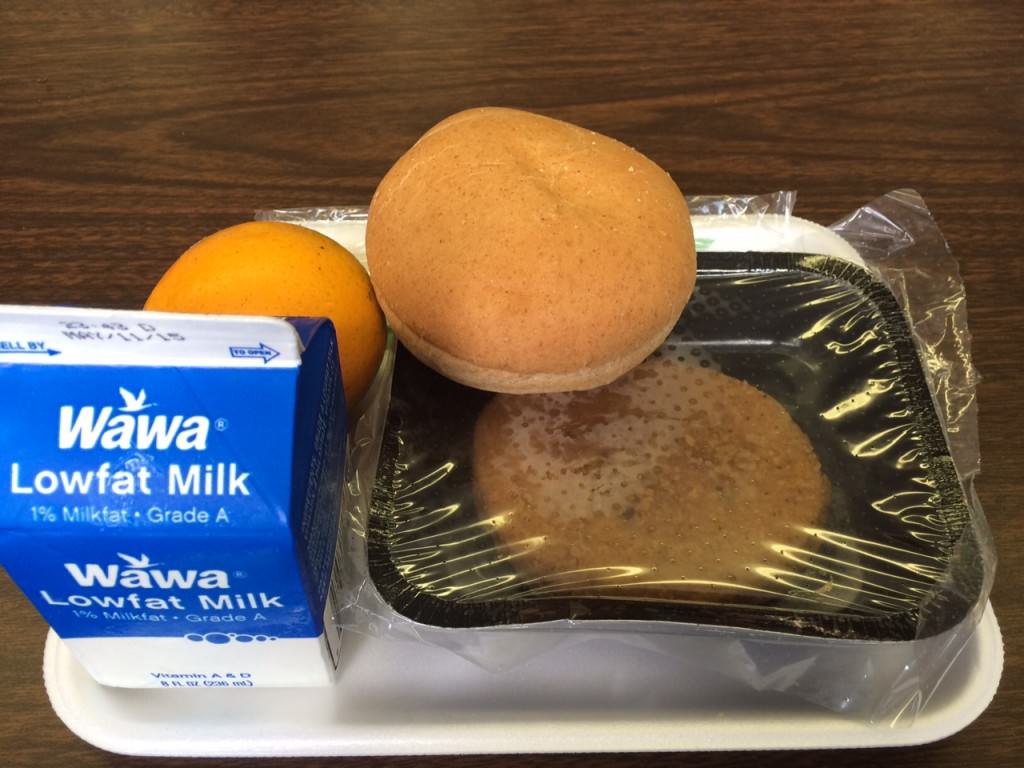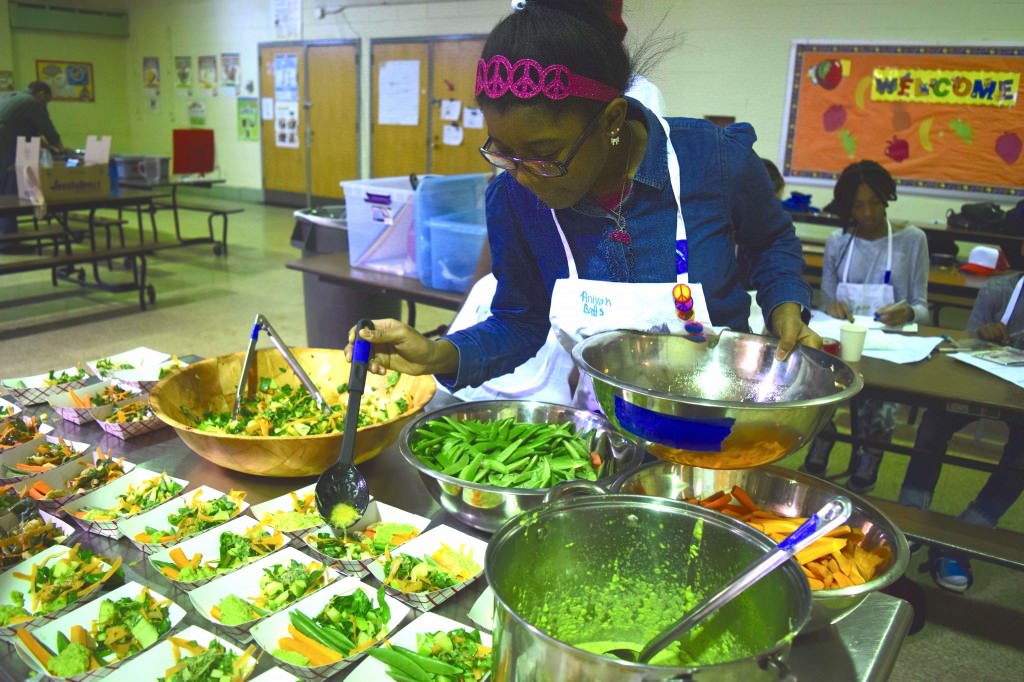Before:
After:
Cooking Crew is a food education activity where students create a meal to serve to their peers. Every Monday and Wednesday middle schoolers at Comegys Elementary are responsible for cooking for the 120 kids and adults in the after-school program. Here’s the flow of activities during Cooking Crew Academy:
- All young chefs gather together, sitting in their teams to listen to the Head Chef Check In.
- Sign In– students sign into the studio binder, pick a captain, and complete the Health Check.
- Young chefs next complete the Setup Checklist. The first team to successfully complete the Checklist (as determined by the Chef Ref) picks first in the Ingredient Draft.
- After selecting their ingredients, each team participates in the Recipe Brainstorm, punctuated by the Team Cheer.
- On each team a few young chefs write the Recipe Flowchart, and the rest begin Cooking Prep.
- The main task of cooking crew is creating lots of really tasty food in a safe, clean environment. Students master a variety of techniques. During cooking time, if a student isn’t engaged he/she can earn points at the fitness station or in an enrichment activity (art, journalism, documentary media).
- Cooking Crew fosters peer education. Encourage early elementary teachers to send a select few young students to participate in cooking crew (it’s a proven incentive to encourage good classroom behavior).
- The end of cooking crew is dedicated to food service and clean-up. All cooking tools are cleaned, dried, organized, and inventoried. 4-bin systems are dismantled. Students who researched the nutritional benefits and cuisine of their dishes get precedent to serve. All chefs eat after the whole community is served.
- After many weeks of Cooking Crew, the team with the most points wins the Watermelon Cup. The chef with the most points with the Pineapple Trophy for Most Valuable Chef.
Here’s how to get a cooking crew started at your school:
- Find space. The gym (with tables) or cafeteria is ideal, but any open classroom (or picnic tables outside) will work. Access to a water source and drain is key.
- Divide the students into teams (we had 3 on each day- red, blue, black).
- Recruit adult mentors. There should be at least 1 adult per team to supervise cooking (we had 2-4). If possible, find an adult to float around the cooking space making sure everyone is cooking good food safely (an experienced pro or home cook/chef is ideal). Finding adults to supervise fitness, art, journalism, and documentary media stations is also idea.
- Gather supplies. You will need cooking tools, cleaning bins, serving dishes, aprons, hats, cameras etc. Organize them by team. You will also need food to cook each week. Think locally. Through a relationship with Bartram’s Farm and Community Food Resource Center, we cooked with the freshest produce in Philadelphia.
- Print out the materials you need to stay organized and keep score.
- Here’s the curriculum.

